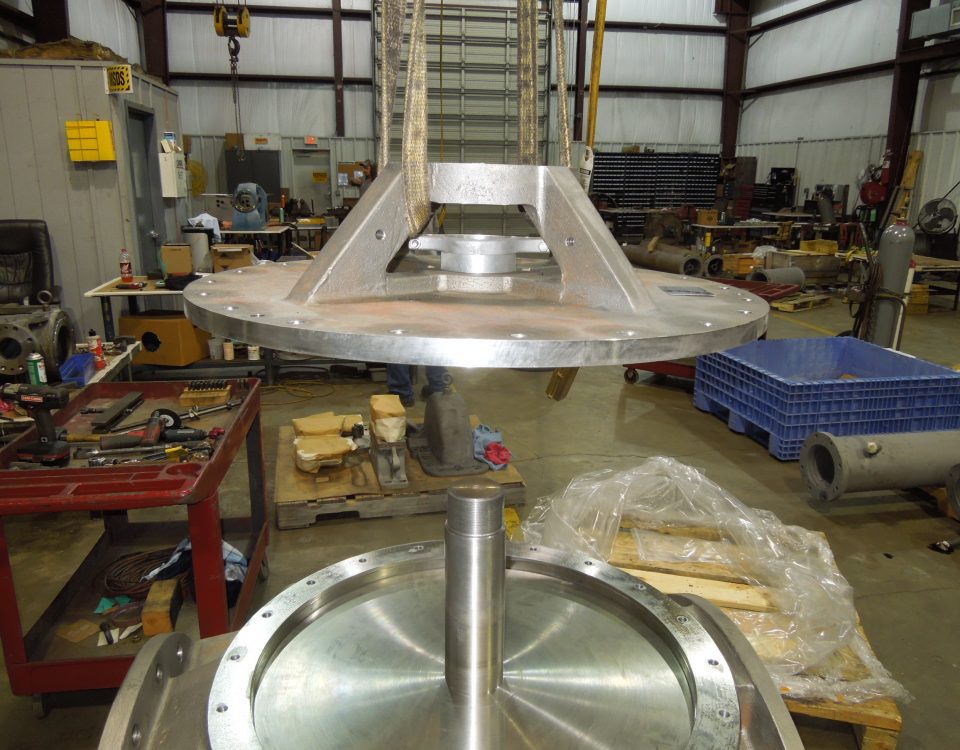
Vertical Pumps and Vibration
May 3, 2021
3 Ways to Improve the Performance of Your Vertical Pump
August 28, 2021At HDS, rotary valve repairs are common. As a result, we have seen it all. Below, we will share our guide to rotary valve troubleshooting and repair.
What are Rotary Valves?
Rotary valves are flow control devices that use rotor blades to regulate the flow of a liquid, gas, or steam. These valves are often found in combustion and production engines, chromatography applications, pumps, and much more. Rotary valves are susceptible to performance issues due to their harsh working environments even though they are designed with precision. A few common rotary valve issues are listed below.
- Rotary Valve is Leaking Air
Air leakage is a common issue in rotary valves. They are often designed with an approximate 0.0003 to 0.012 inch leakage clearance. As a result, an air leak is inevitable in rotary valves but may be within operating parameters. It becomes an issue if and when the leaking air surpasses the calculated leakage. The two most common types of air leaks in rotary valves are 1. clearance leakage and 2. displacement leakage. Clearance leakage happens when there is an increase in the calculated clearance of a valve. Displacement leakage occurs when there is a change in rotor blades due to overuse, equipment bumps, etc. It is important to know which type of leakage you have before attempting a repair.
The good news is either scenario can be relatively easy to fix. Clearance leakage can be fixed by installing the proper flexible seal or seals to allow proper flow. Displacement leakage can be a bit trickier. The rotary valve assembly will most likely need to be taken apart partially or completely depending on make and model. The rotor blades must be located in these cases to see if they are worn out and need to be replaced or just displaced and need adjustment.
- Rotary Valve Noises
Some noise in the rotary valve is normal. However, excessive noise can point to a bigger problem. Excessive noise may be caused by material buildup on the blades. It can also occur when the fins interact with the clearances, improper valve installation, improper maintenance, shaft issues, and other factors.
A number of fixes can be applied to a noisy rotary valve including:
- Plating or coating the interior with nickel or chromium.
- Bore rebuild or fabrication.
- Rotor shaft replacement.
- Installation of bearings.
- Reset clearances.
- Replace or face end plates.
- Rotary Valve Jams
Jams are one of the most challenging rotary valve issues. They often occur as the result of trapped material that has entered the rotary valve, possibly due to the failure of other components. Foreign materials can enter, should the rotor blades operate in the reverse direction or when working with heavy, chunky, or fibrous material.
Jams must be repaired by identifying the cause of the foreign material and removing it. It may be possible to bevel the blade tips to remove current foreign material as well as prevent it in the future. The valve may also have flexible seal strips installed to the blades to allow material to pass over the blades without trapping or sticking within the valve.
Houston Dynamic Supply Rotary Valve Troubleshooting and Repair
The team at HDS has over 30 years of experience diagnosing and repairing rotary valves in many industrial applications. Our facility is one of the largest rotating equipment testing and diagnosing facilities in the Gulf Coast area. We work in many industries from refineries to manufacturing and beyond. In addition to advanced testing for rotary valves, we also provide non-destructive testing, visual inspections, precision machining, disassembly, and much more for your equipment. Contact us today to learn more.


